This vegetable lasagna is a delicious and easy vegetarian main dish that is perfect for any occasion. This classic comfort food is packed with fresh vegetables, creamy cheese, and a flavorful tomato sauce, making it a hearty and savory dish and a great way to get your daily dose of vegetables!
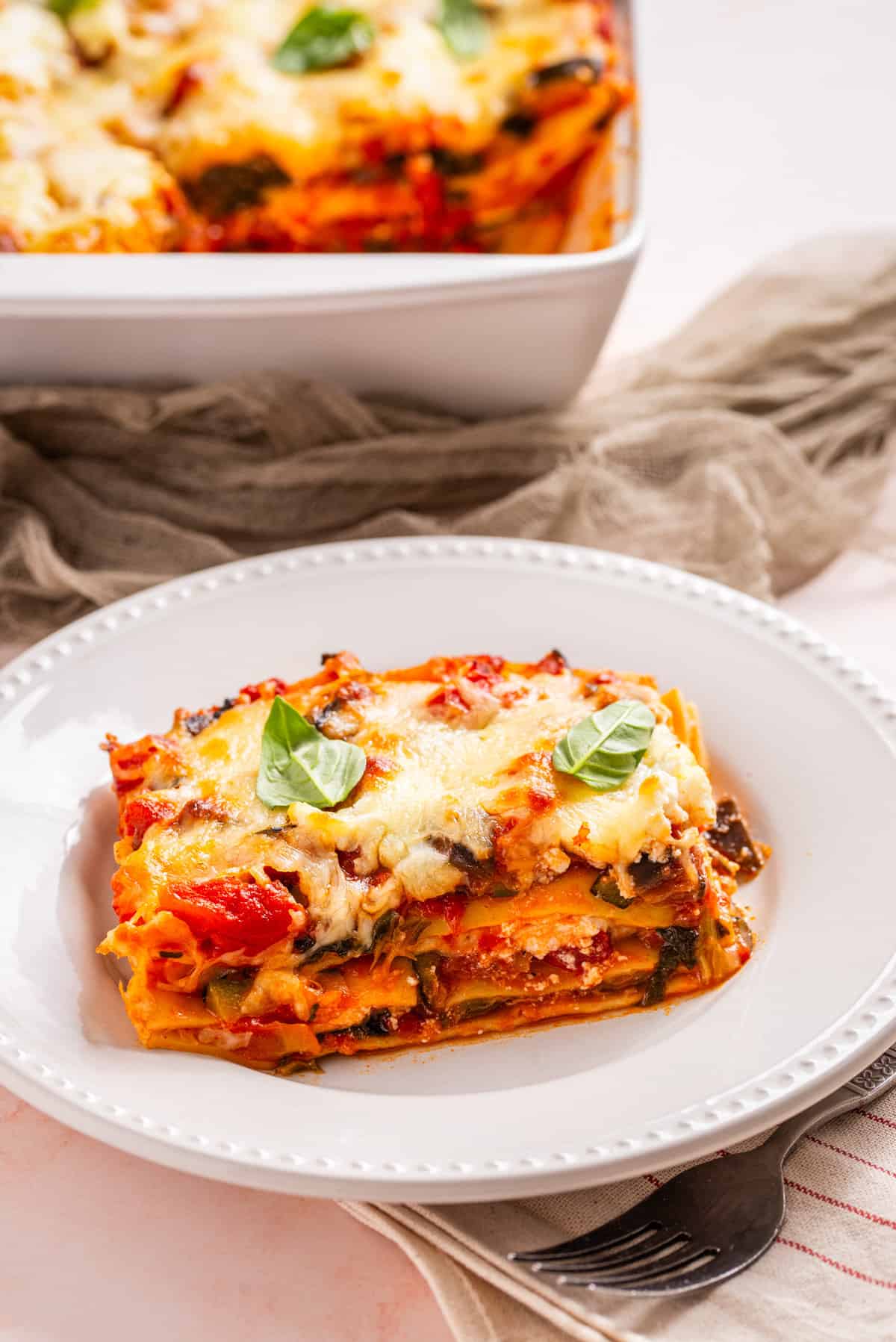
This post contains helpful tips and tricks! If you're in a rush, please use the "Jump to Recipe" below!
💭 Why this is the best veggie lasagna
- Delicious way to sneak in vegetables. My recipe uses a variety of fresh vegetables, including zucchini, eggplant, spinach, mushrooms, and carrots. This ensures that your lasagna is packed with nutrients and flavor. But trust me, with they won't even notice!
- Classic comfort food but better. This creamy vegetable lasagna retains its hearty and comforting quality while offering a lighter and fresher taste compared to classic lasagna.
- It's lighter and fresher than classic lasagna. Traditional lasagna can be quite heavy and greasy. My recipe is meatless and uses a lighter tomato sauce, making it a healthier and more refreshing option.
- Make any season of the year. Use fresh vegetables that's available to you and you can make this lasagna recipe all year round!
📋 Ingredients and notes
To make this easy baked vegetarian lasagna, you'll need the ingredients for the sauce and for the lasagna.
- For the sauce, you'll need white button mushrooms, eggplant, zucchini, carrot, onion, garlic cloves, fresh spinach, chopped plum tomatoes, dried oregano, red pepper flakes, white sugar, salt, black pepper, and olive oil.
- For the lasagna, you'll need lasagna noodles, ricotta cheese, fresh basil, and shredded mozzarella cheese.
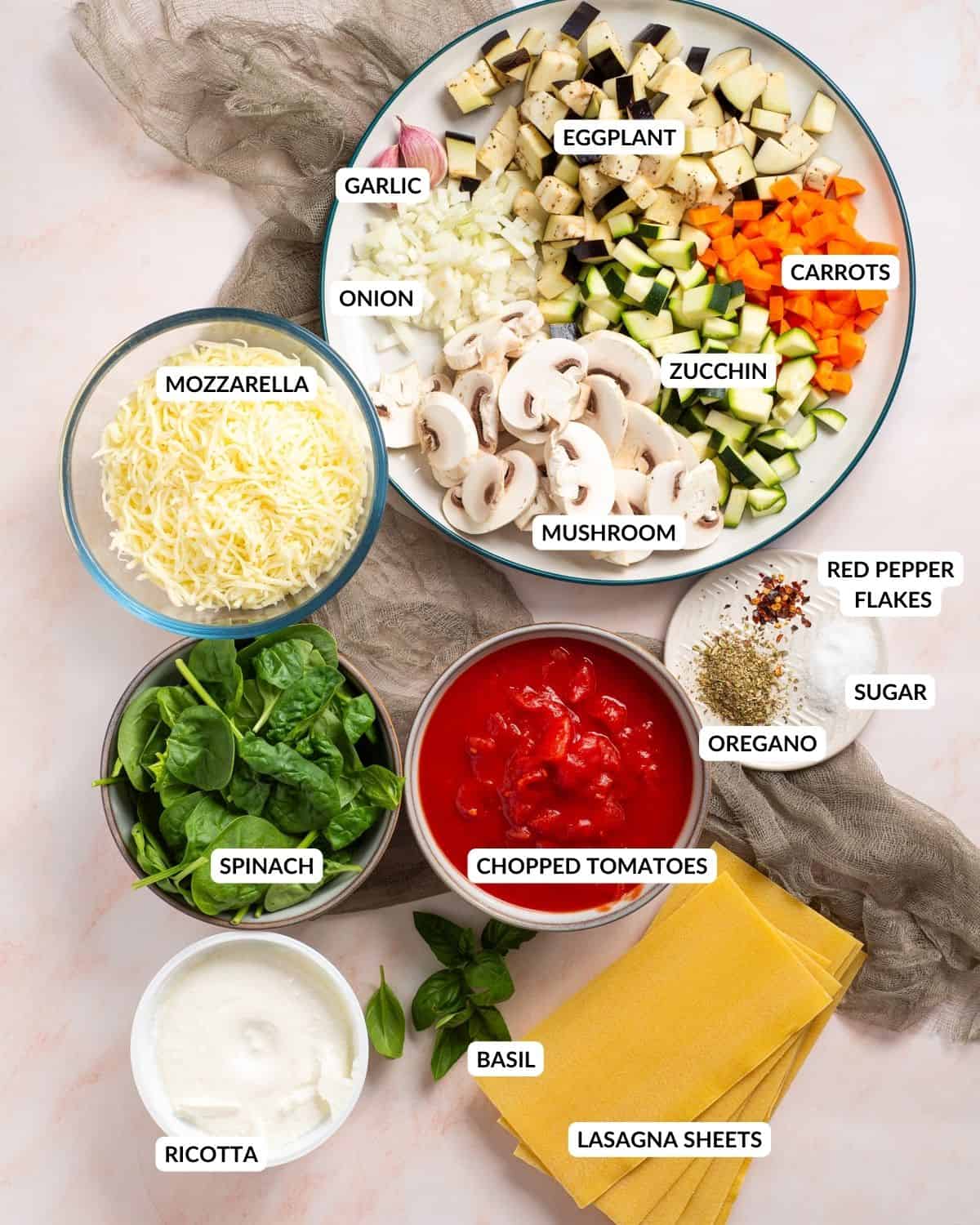
Notes and variations
- Healthier noodles. I use no-boil noodles here to make it easier, but you can use regular or whole wheat lasagna noodles or even a more protein-packed alternative. Just cook them according to package instructions before layering the lasagna!
- Mushrooms. You can substitute white button mushrooms with cremini mushrooms or shiitake mushrooms.
- Veggies. If eggplant or zucchini are not available, you can substitute them with yellow squash for a similar texture. Alternatively, you can use bell peppers for a different flavor and crunch. You can substitute carrots with sweet potatoes or butternut squash for a slightly sweeter flavor. Use kale, Swiss chard, or arugula as a substitute for spinach. Keep in mind that the cooking time might vary when you use different greens.
- Chopped plum tomatoes. If you don't have chopped plum tomatoes, canned diced tomatoes or canned crushed tomatoes can be used as a substitute. Make sure to drain any excess liquid if necessary.
- Red pepper flakes. If not available, use red peppers, cayenne pepper, paprika, or hot sauce for heat. You can also omit it altogether.
- Olive oil. Use extra virgin olive oil if available. If you don't have olive oil on hand, you can substitute it with vegetable oil, canola oil, or grapeseed oil.
- Ricotta cheese. You can also use cottage cheese for a healthier twist.
- Hers. If fresh basil is not available, use dried basil or fresh parsley. Substitute oregano with dried basil, thyme, or a combination of Italian seasoning herbs.
- Mozzarella cheese. You can also use monterey jack cheese, provolone cheese, or cheddar cheese.
📖 How to make this meatless lasagna
Place a large pot over medium heat and warm a good drizzle of olive oil. Allow the oil to shimmer.
Once the oil is hot, add the mushrooms, eggplant, zucchini, onion, and salt to the pot. Stir the veggies every couple of minutes and cook until they develop a golden color on the edges. This should take about 8 to 12 minutes.
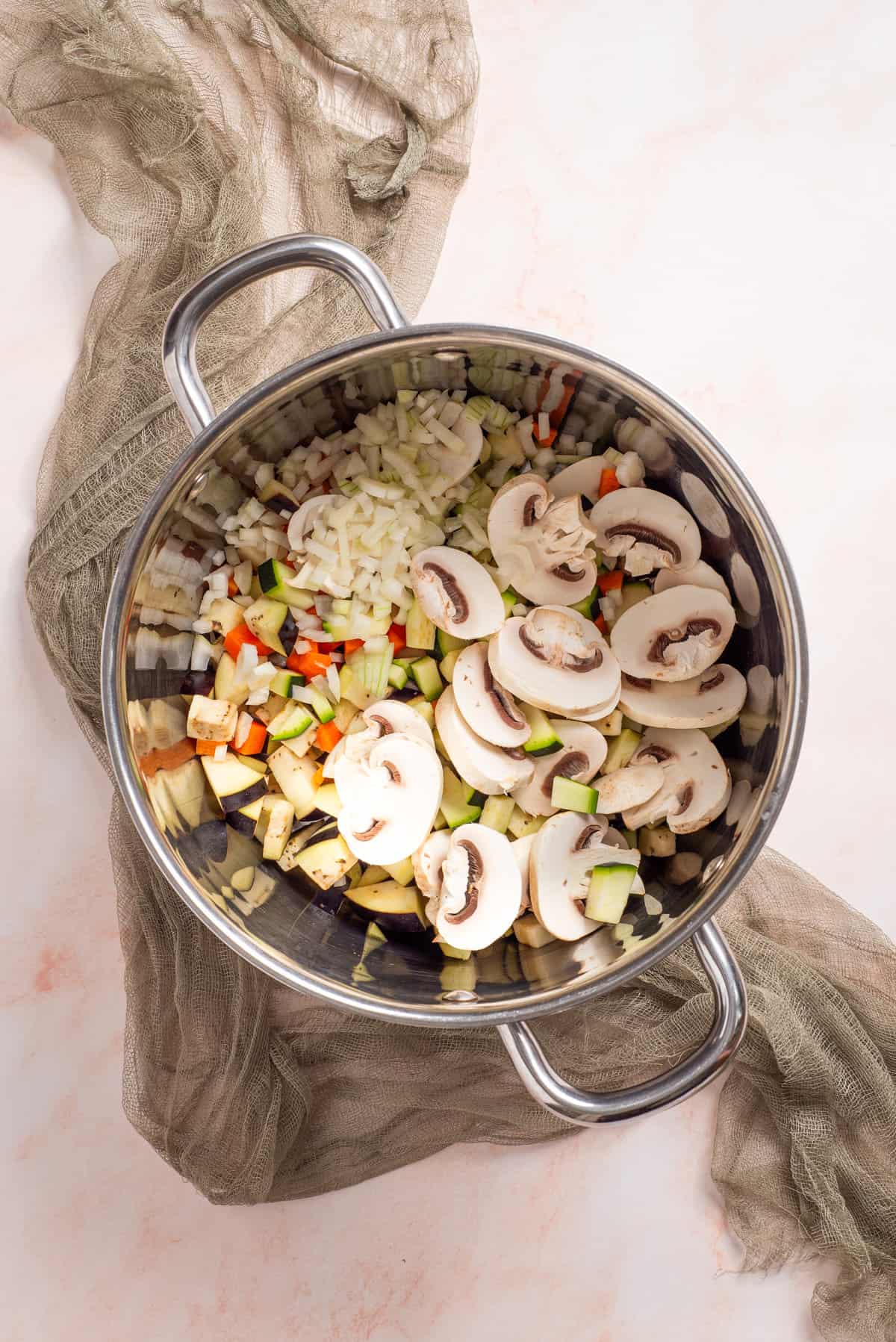
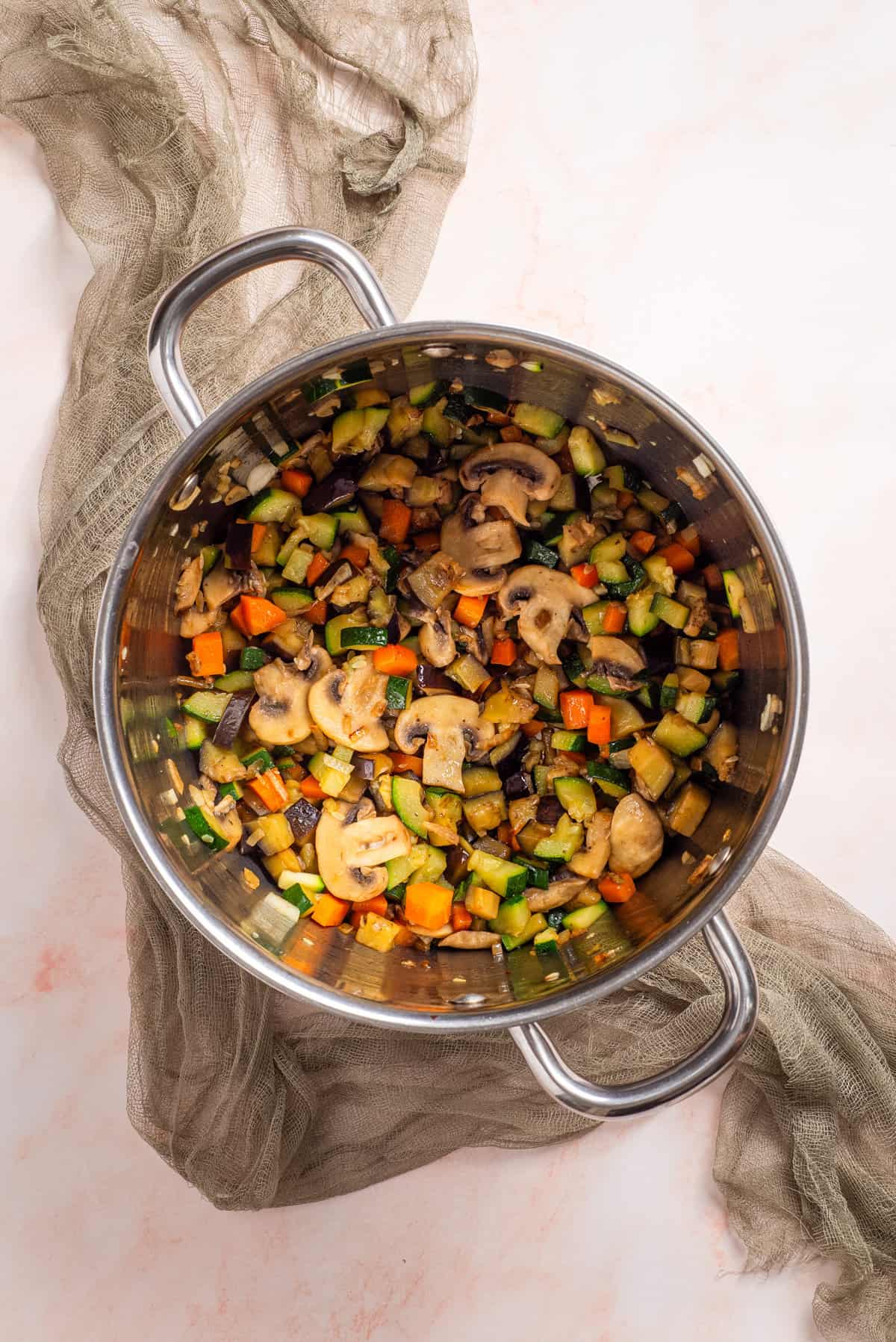
Add the garlic, cook for a minute and then add a few large handfuls of spinach to the pot and continue cooking, stirring frequently, until the spinach wilts. Repeat this process with the remaining spinach and cook until all is wilted, for about 3 minutes.
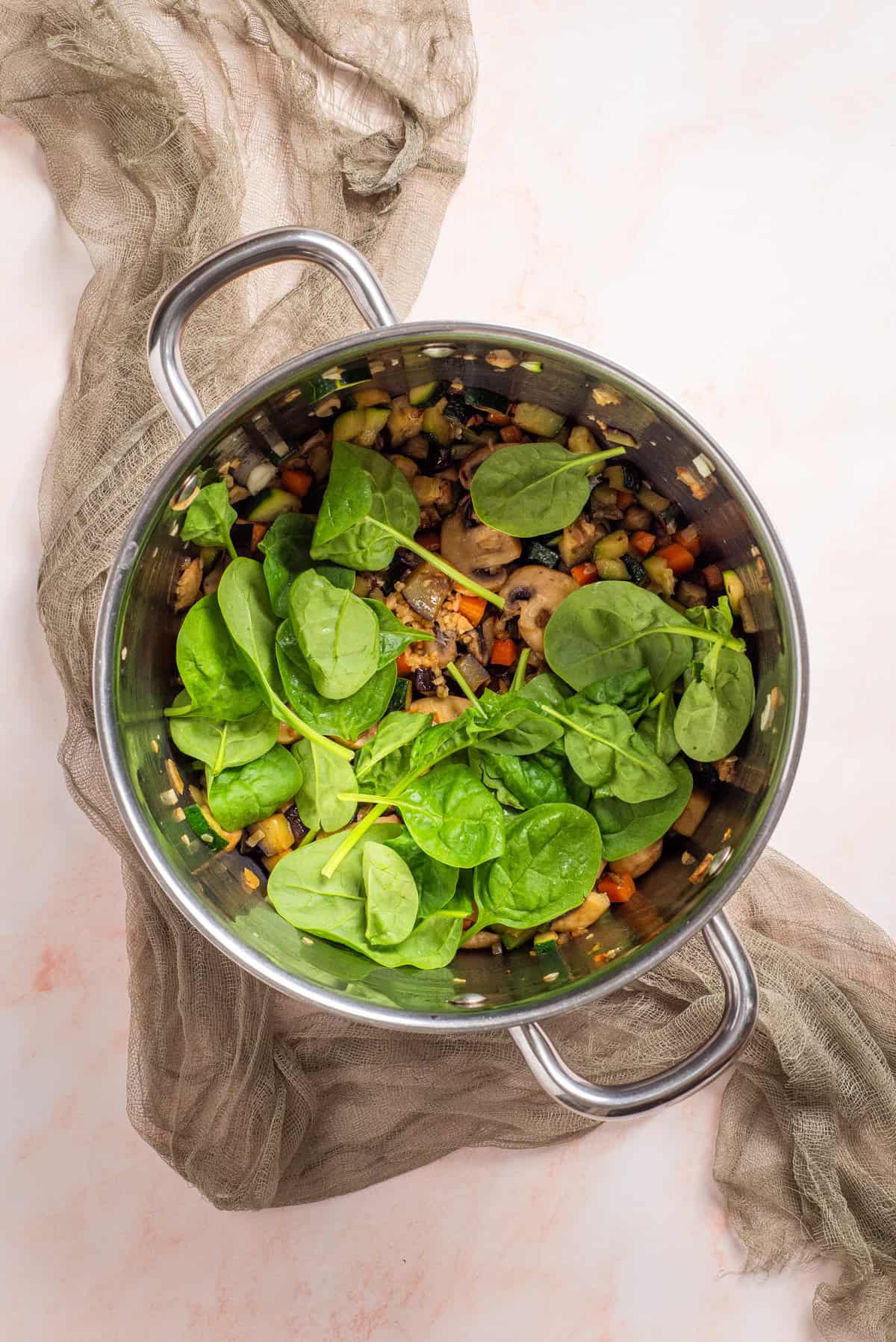
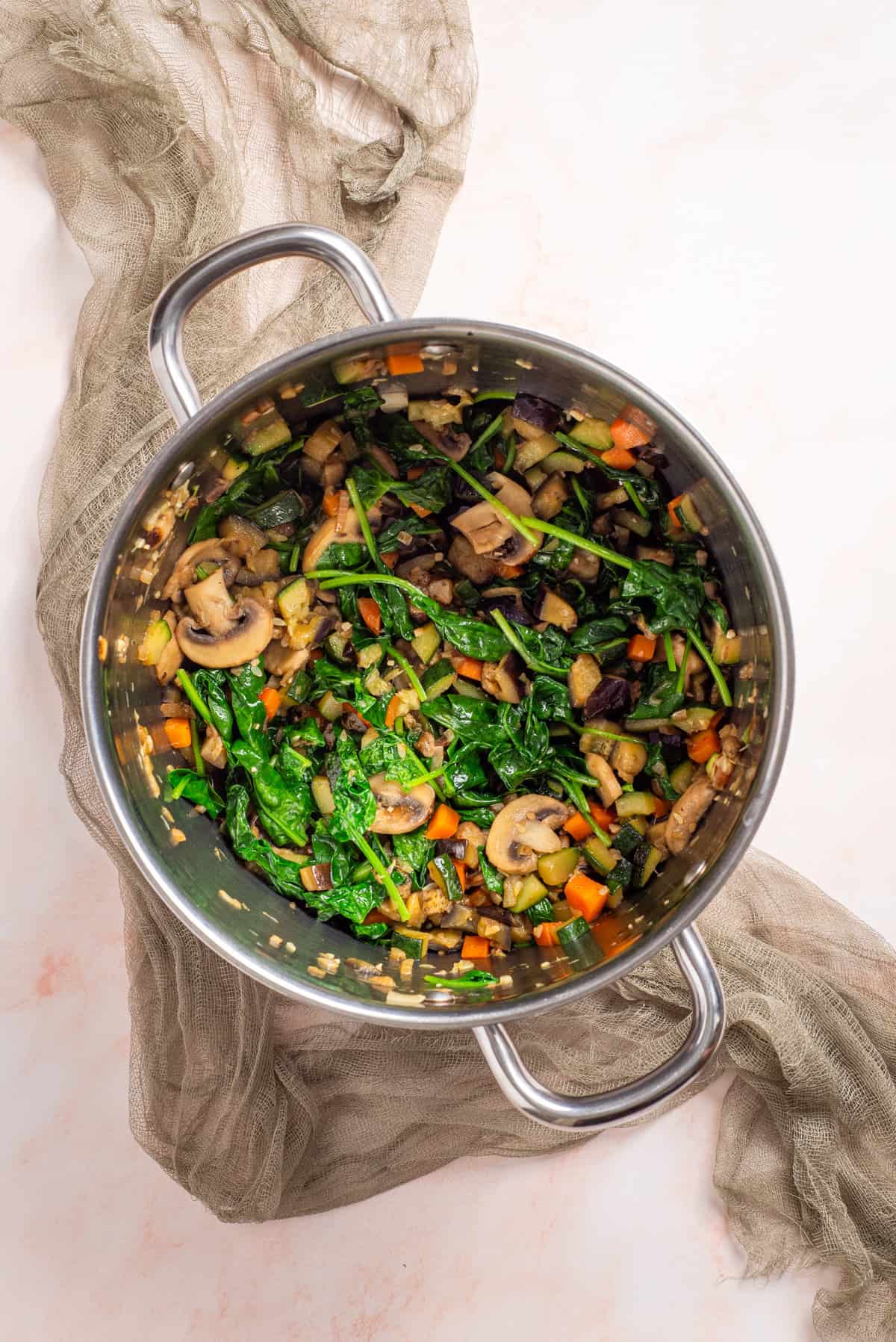
Pour the chopped plum tomatoes, red pepper flakes, salt and pepper. Simmer covered for 20 minutes, stirring occasionally. Add a splash of water if the sauce starts to stick to the bottom of the pan. You should have a thick sauce full of flavor. Remove from the heat and reserve.
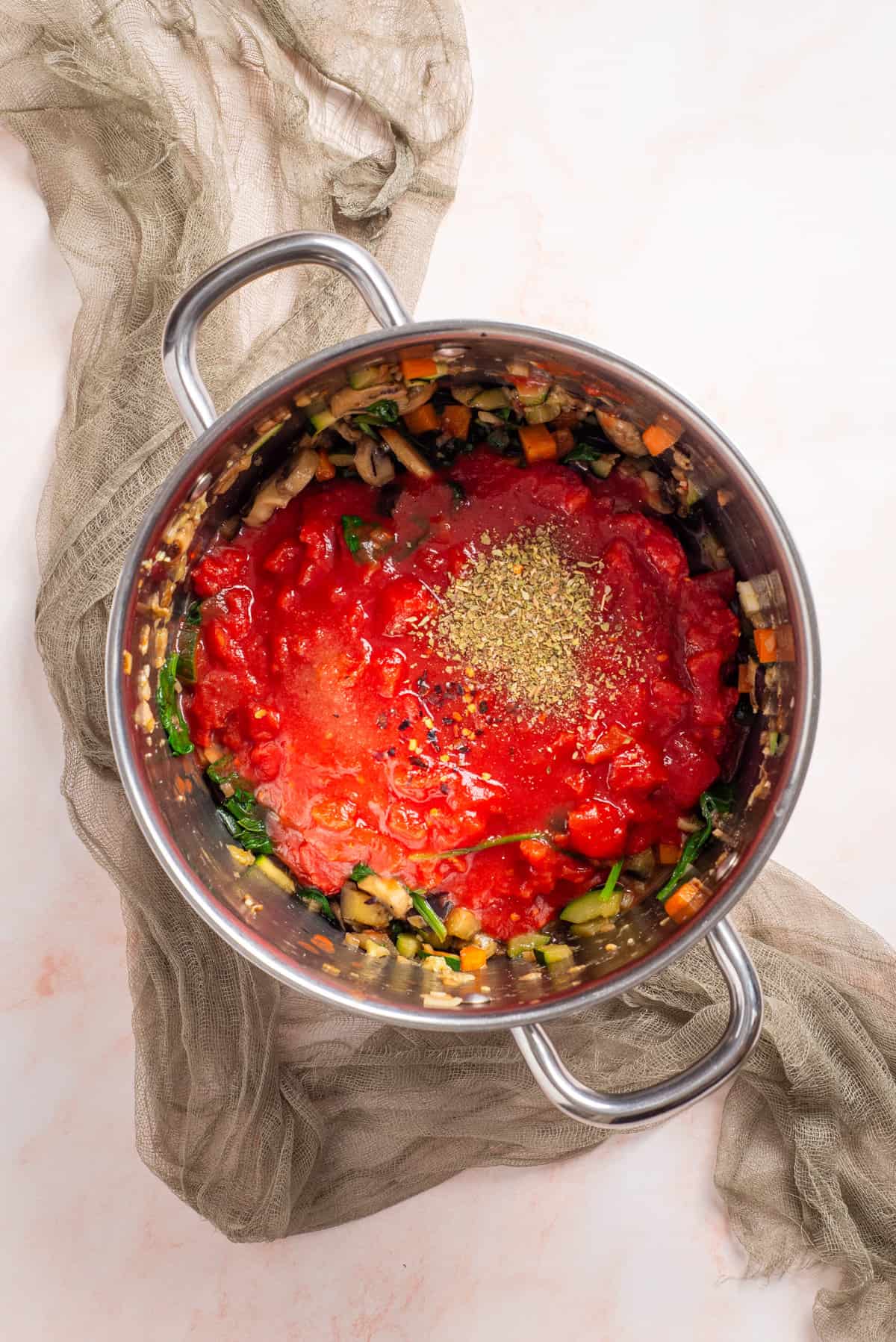
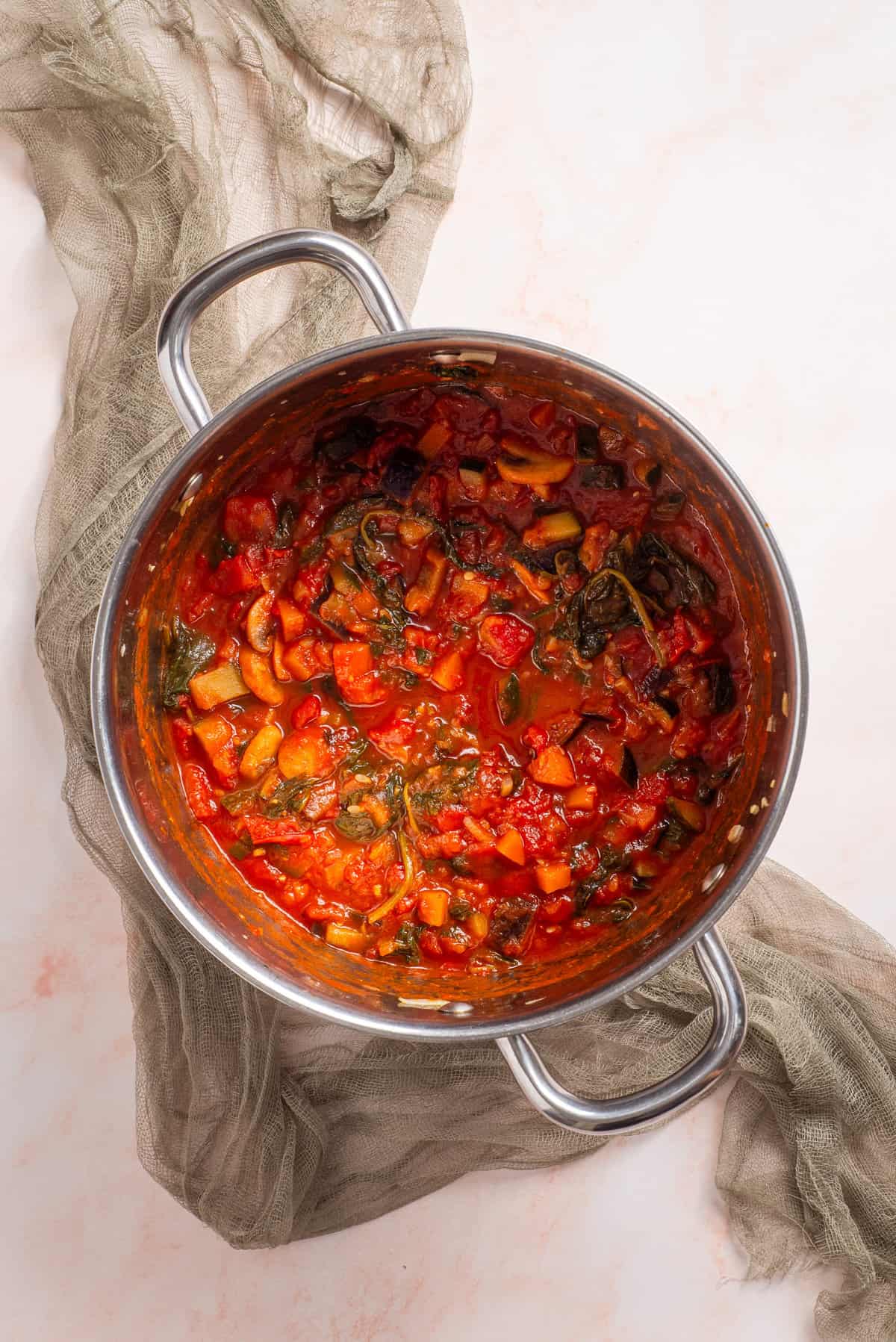
Preheat your oven to 350°F.
To assemble the lasagna, add a portion of the tomato mixture to the bottom of the prepared baking dish, making sure you have enough for 4 even layers.
Place about 3 or 4 no-bake lasagna noodles lengthwise, overlapping a bit. You can cut the noodles to size if needed.
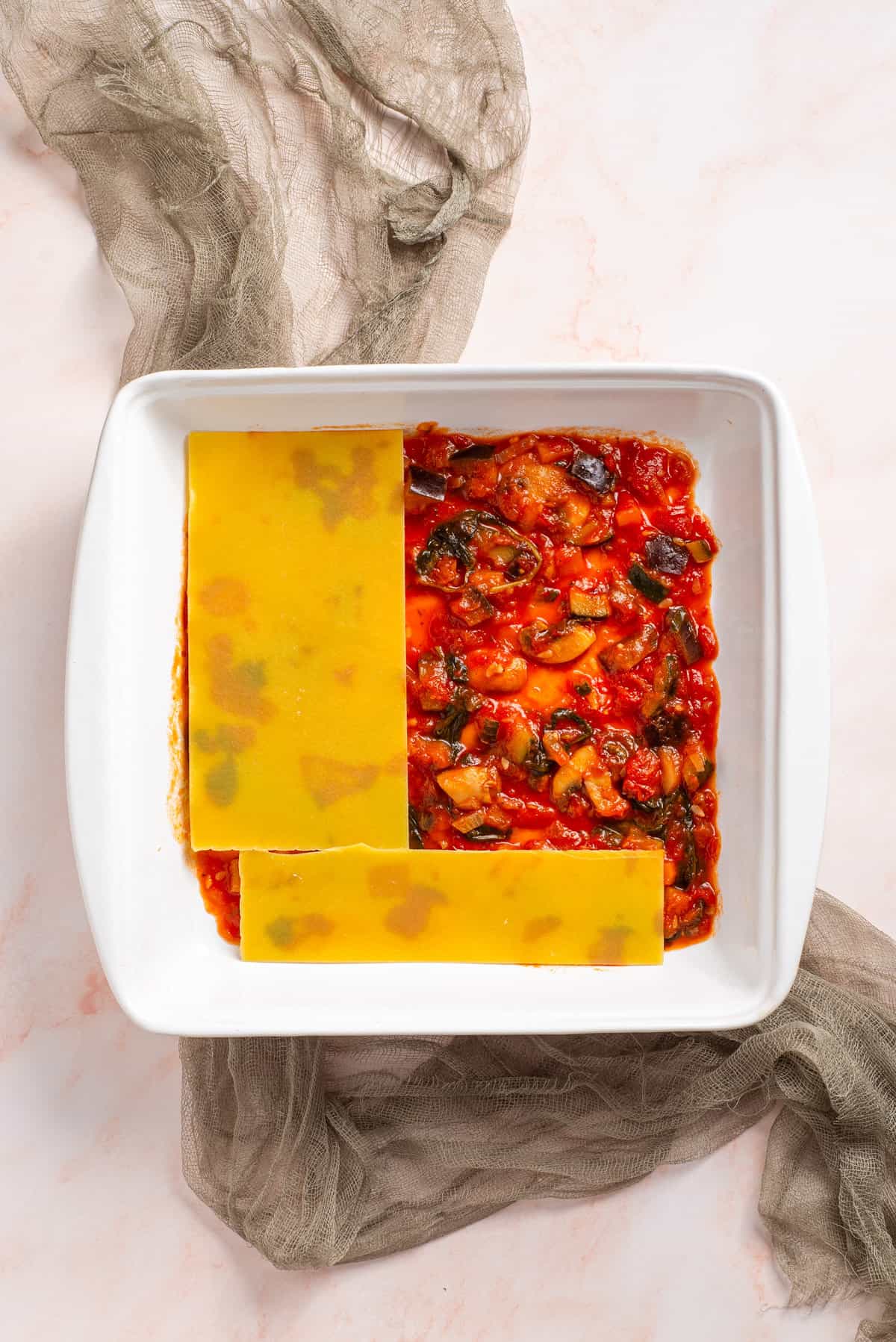
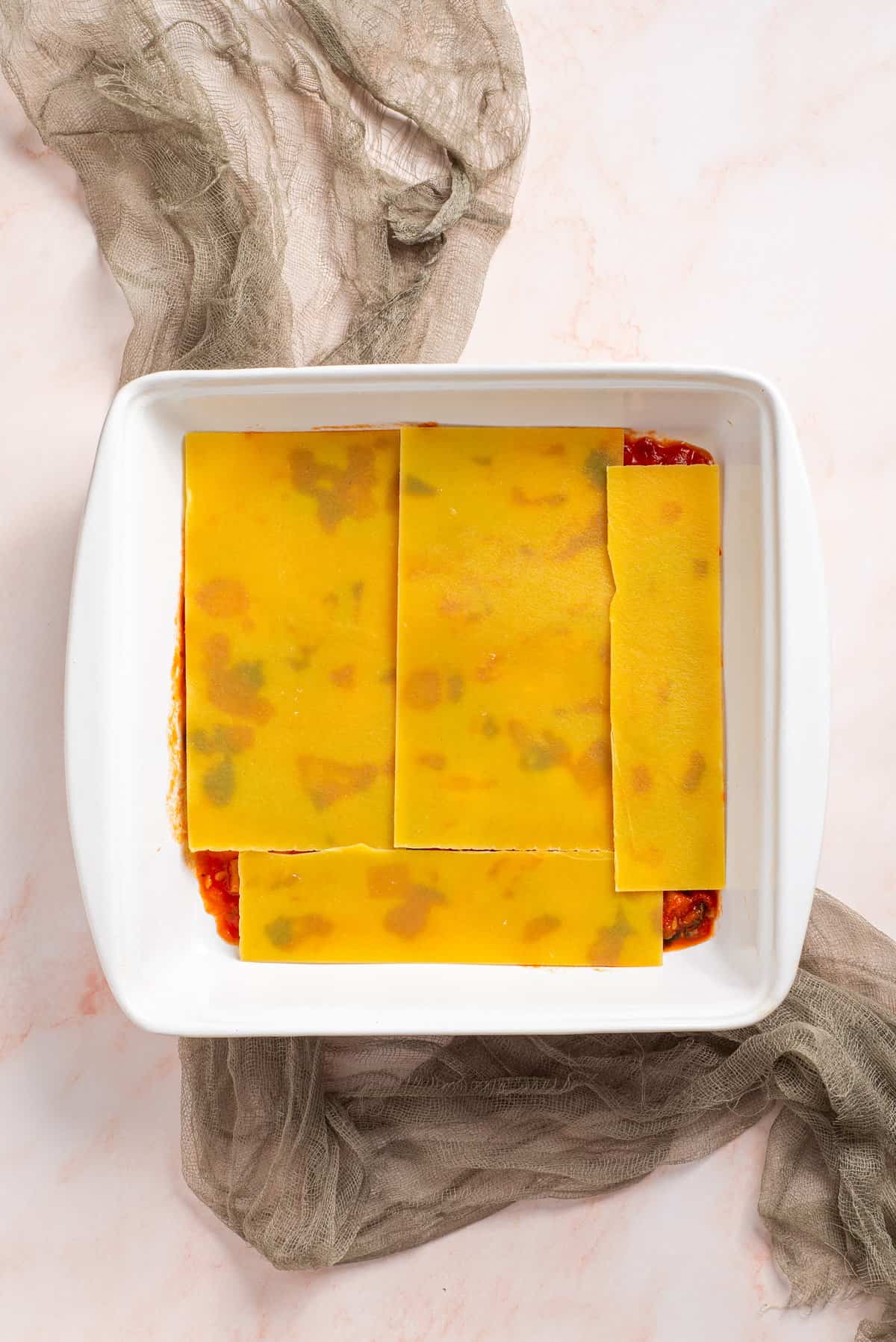
Next, spread ⅓ of the creamy ricotta evenly over the sauce layer, followed by approximately ⅓ of the mozzarella.
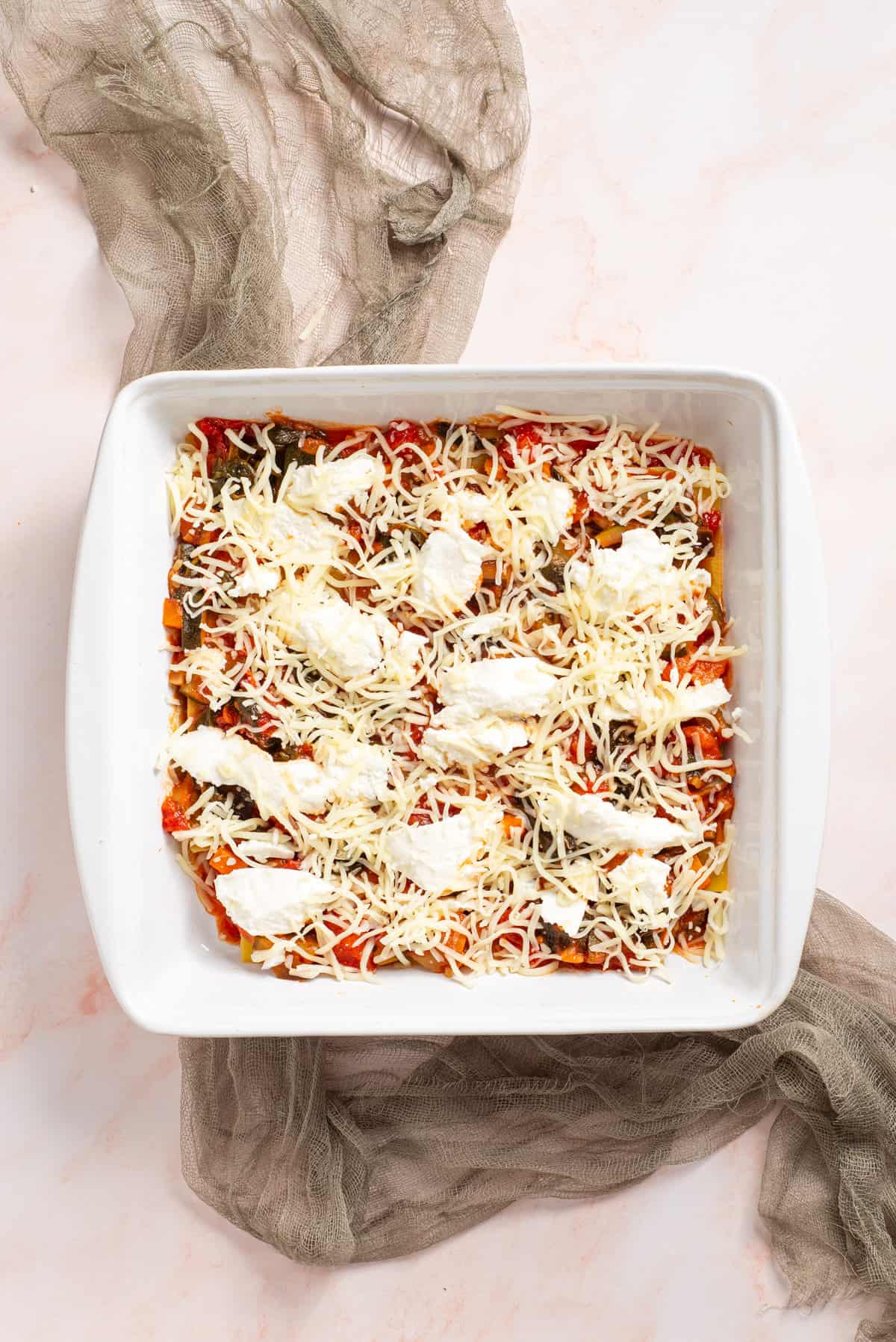
Repeat the layering process and continue layering until you reach the top layer.
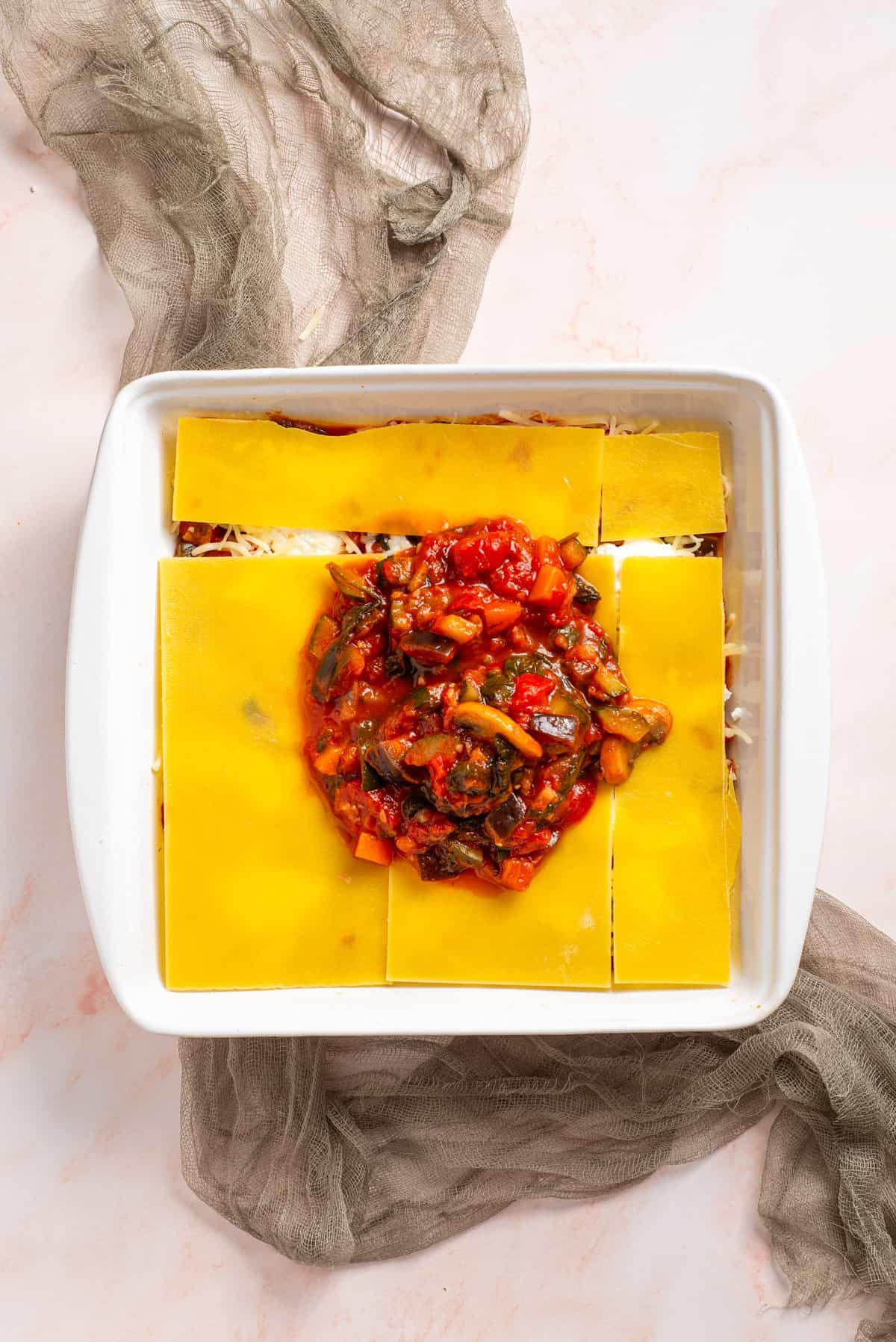
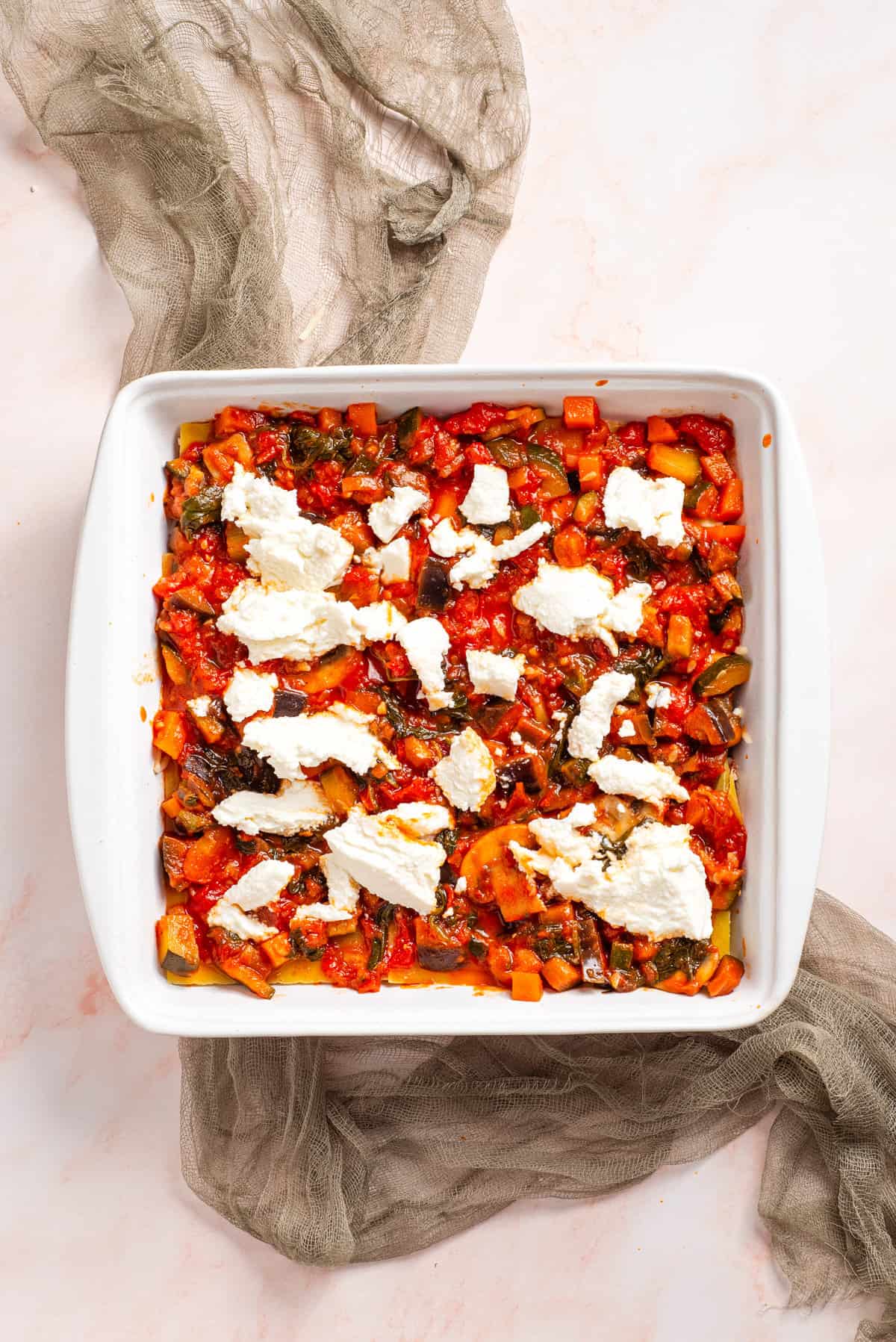
Once you've reached the last layer, spread the remaining sauce evenly over it.
Finally, spread the remaining cheese over the top layer of sauce.
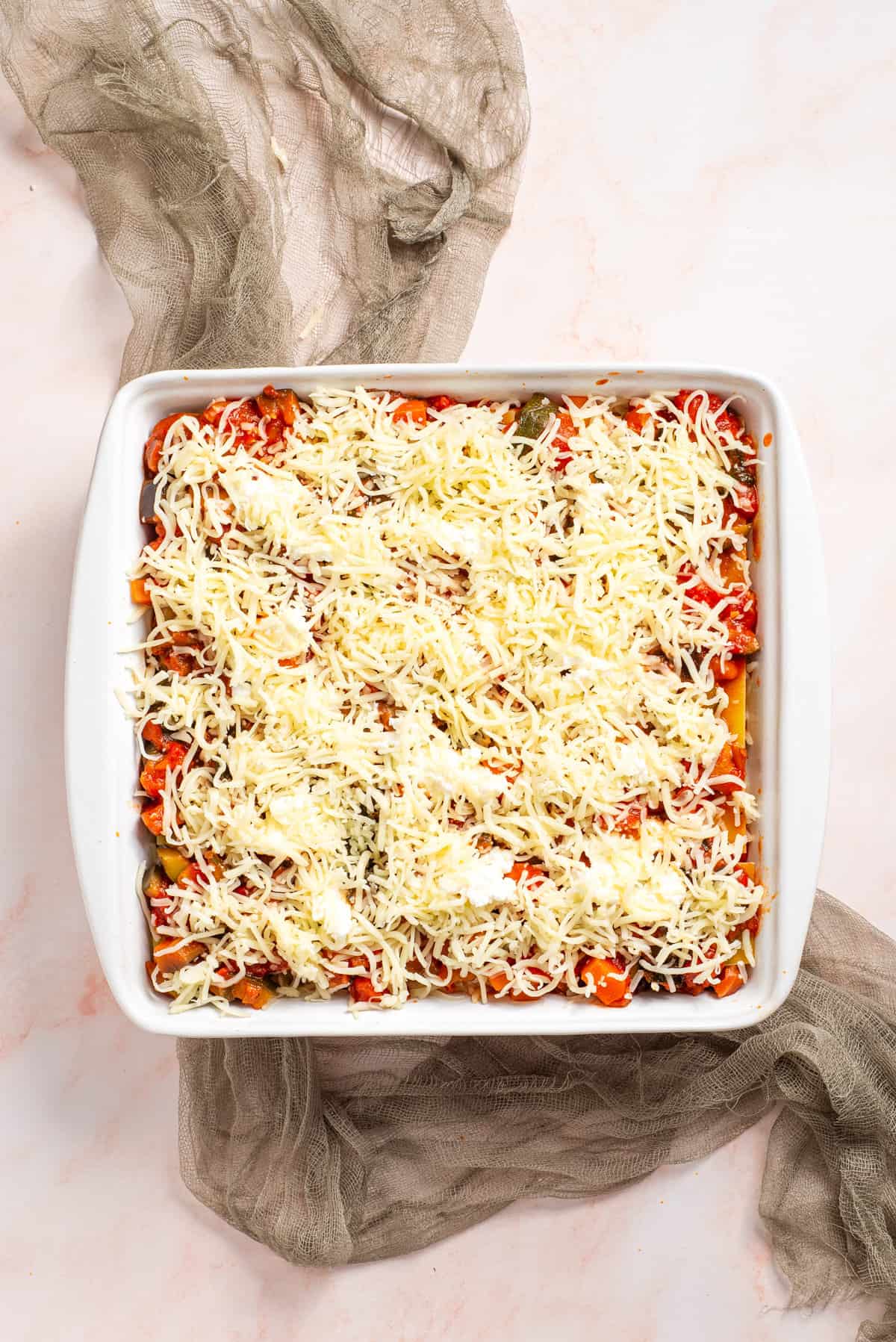
Bake in the oven for 20 to 30 minutes. You can also broil for about 3-5 minutes of low broil to brown the cheese on top.
Top with basil, and allow to set up on the counter for about 10 minutes before cutting into slices. Cut into 9 or 12 even slices. Serve and enjoy!
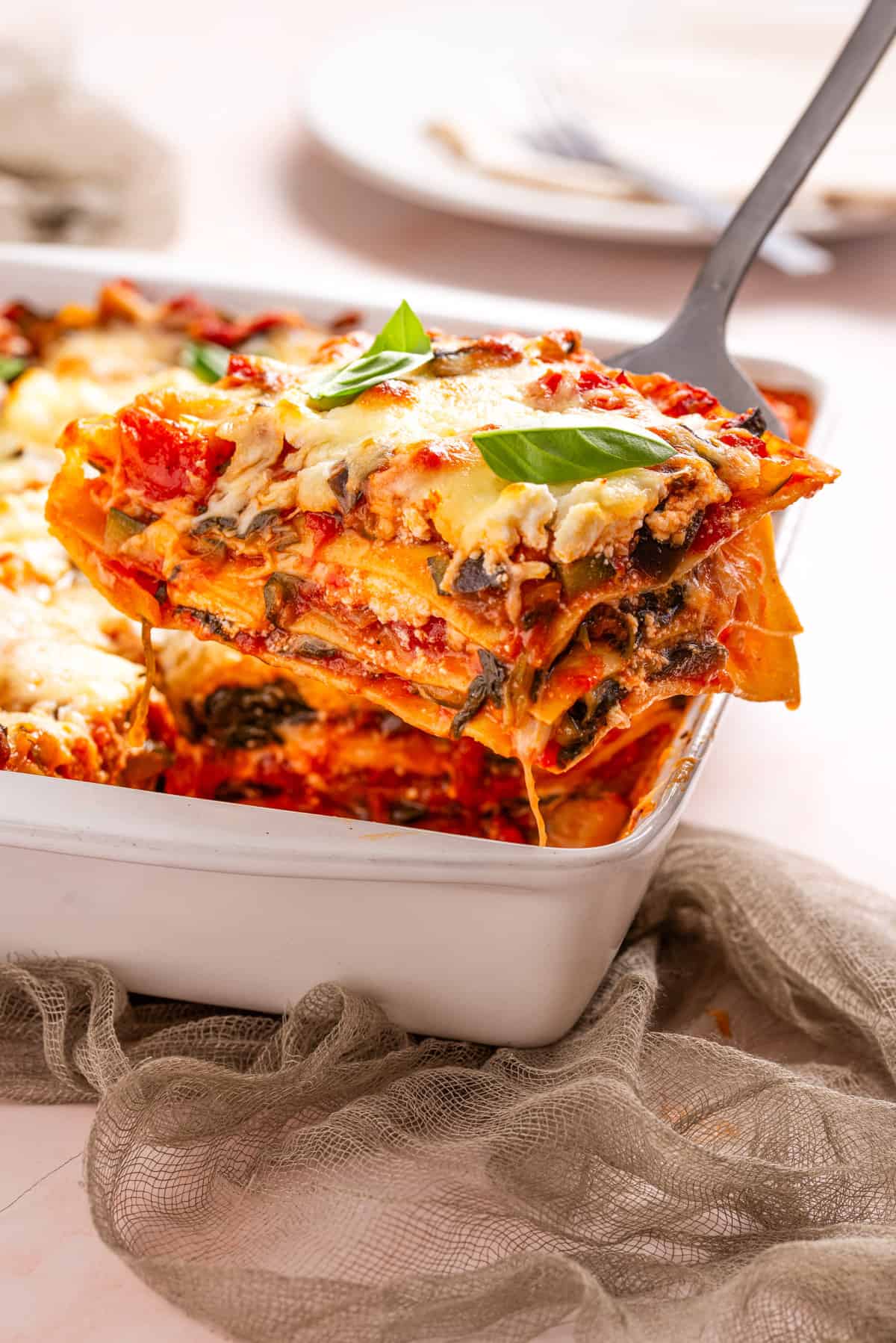
👩🏽🍳 Expert tips for the best vegetable lasagna
Make the best vegetable lasagna recipe by following these expert tips!
- Use fresh, high-quality ingredients. Use fresh vegetables and make sure you get quality products when buying lasagna noodles, ricotta and mozzarella cheese, and olive oil. Pre-shredded cheese contains preservatives that can prevent it from melting smoothly. So, use freshly grated cheese if possible. This cheese grater is a life saver in my household (and it's so fun to use!)
- Prep the vegetables well. Chop evenly, and remove moisture. Instead of cooking in the pan, you can also roast till golden (like in this roasted vegetable medley). Don't overcook - keep them tender, not mushy for lasagna texture.
- Opt for lighter tomato sauce, not heavy. You can also use a broth for freshness. Don't oversauce; aim for moist, not soggy lasagna. Excess sauce makes slicing and serving tricky!
- Balance the layers. Make sure the layers are well-balanced with noodles, cheese, and sauce. Avoid overloading any one layer.
- Season well. Use fresh herbs like basil, oregano, and thyme to add depth to your sauce or filling.
- Cover while baking. Cover the lasagna with foil for the first part of the baking time to prevent the top from burning, then remove it to allow the cheese to brown during the last part of baking.
- Let it rest. After baking, allow the lasagna to rest for about 10-15 minutes before serving. This helps it set and makes it easier to slice and serve.
👩🏽🍳 Troubleshooting FAQs
When it's time to assemble your vegetable lasagna, you'll need a deep baking dish. Begin with a layer of tomato sauce at the bottom to prevent the noodles from sticking. Then, place a layer of lasagna noodles on top of the sauce, slightly overlapping to cover the bottom.
Next, add a layer of ricotta cheese, spreading it evenly over the noodles, followed by a layer of mozzarella cheese. Repeat the layering process until you reach the top of the baking dish. Once you reach the top of the baking dish, pour a generous amount of tomato sauce and sprinkle with mozzarella and parmesan cheese.
Preheat your oven to 325°F. Place your vegetable lasagna in an oven-safe container and cover it with aluminum foil to prevent it from drying out. Place the lasagna in the preheated oven and reheat for about 20 minutes, or until it warms all the way through.
Allow the lasagna to cool at room temperature. You can either wrap the entire vegetable lasagna altogether or slice them in individual portions and then wrap them in a plastic wrap. Next, wrap it in aluminum foil to protect against freezer burn. Make sure to label the lasagna with the contents and date your froze it. Freeze it for 2-3 months.
Vegetable lasagna can be kept in the refrigerator for 3-5 days. Make sure to use an airtight container to help it maintain its freshness.
🍴 What to serve with vegetable lasagna
You can serve vegetable lasagna on its own or with a side salad, garlic bread, or a slice of crusty Italian bread. Whether on its own or with a side dish, vegetable lasagna will surely be a crowd pleaser. These are my favorites:
- Salads: A simple green salad, Caesar salad, Nicoise salad, or Caprese salad are all great options to serve with lasagna. You can also add some grilled vegetables or roasted tofu for a more substantial side dish.
- Soups: A hearty lentil soup, brothy Tuscan cannellini bean soup, or classic tomato soup would all be delicious served with lasagna.
- Bread: Garlic bread, crusty bread, or focaccia bread are great sides for lasagna. You can also serve some breadsticks or dinner rolls on the side.
- Other vegetable dishes: Roasted vegetables, grilled vegetables, or steamed vegetables are all healthy and delicious side dishes that you can serve with lasagna. You can also try making a vegetable stir-fry or a vegetable gratin.
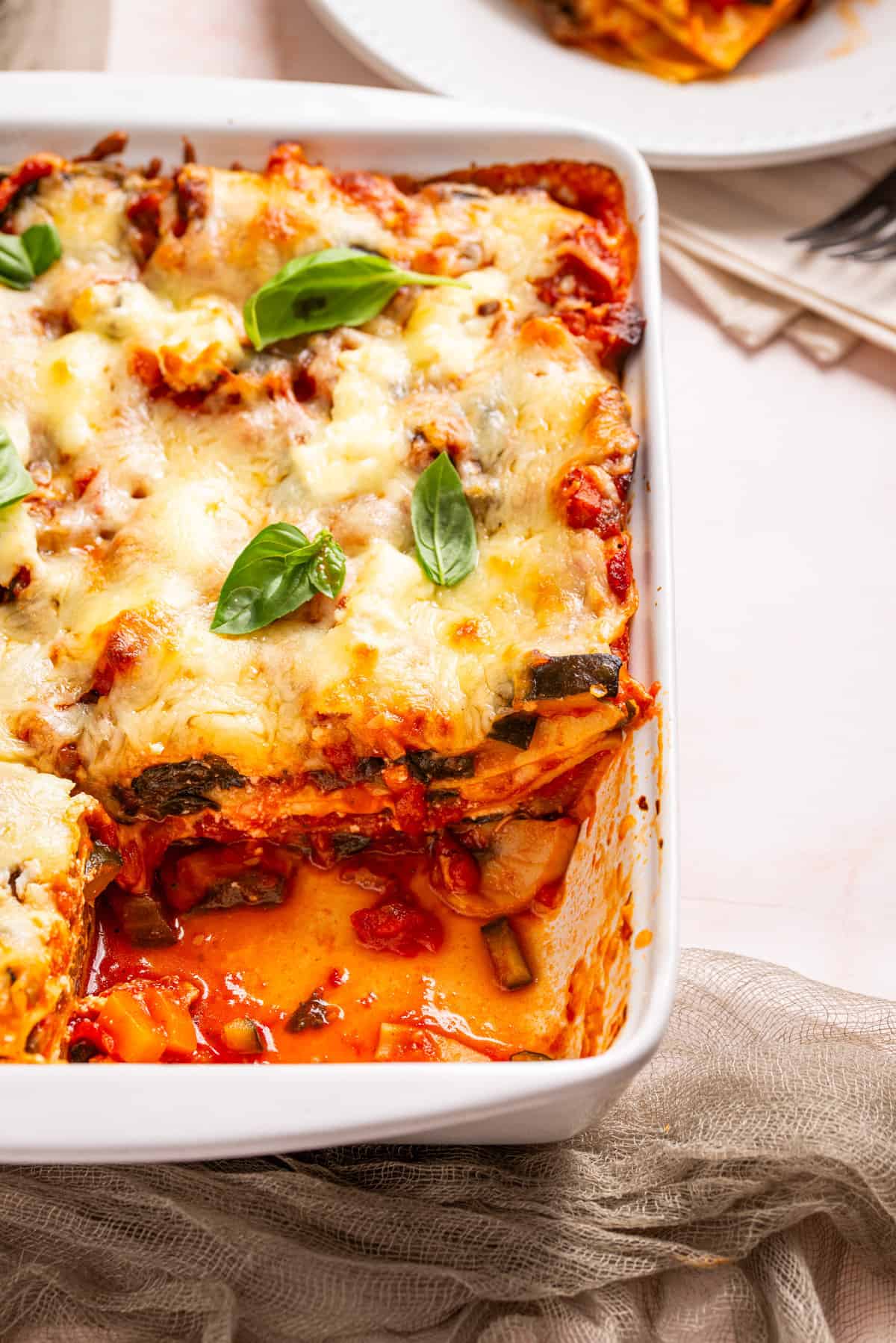
🍴 Make-ahead, storing & reheating instructions
Make-ahead: Assemble the lasagna, but do not bake. Instead, cover it tightly with plastic wrap or foil and refrigerate for up to 24 hours or freeze for up to 3 months. Then, bring the lasagna out 30 minutes before you need to bake. If you freeze, transfer it to the fridge the night before and follow the rest of the baking instructions.
To store leftover lasagna, transfer to an airtight container. You can store the whole lasagna together or store individual slices separately. You can safely store lasagna in the refrigerator for up to 3-5 days.
To freeze, make sure the cooked lasagna has cooled to room temperature. Wrap either the full lasagna or individual slices in plastic wrap, and then again, with aluminum foil (or place in a freezer-safe bag) to protect against freezer burn. Label and freeze for up to 2-3 months.
To reheat, preheat your oven to 325°F. Transfer the lasagna to an oven-safe dish, and cover with aluminum foil to prevent from drying out. Bake for about 15-20 minutes or until the lasagna is heated through.
More delicious vegetarian bakes:
If you tried this recipe, don't forget to comment and rate! ⭐⭐⭐⭐⭐
📖 Recipe
Vegetarian Lasagna
Ingredients
For the sauce
- ½ lb white button mushrooms, sliced
- 1 eggplant, cut into small cubes
- 1 zucchini, cut into small cubes
- 1 carrot, cut into small cubes
- 1 onion, large, chopped
- 3 cloves garlic, minced
- 6 oz spinach
- 28 oz tomatoes, chopped plum tomatoes or substitute other diced variety
- 1 tablespoon dried oregano
- ½ teaspoon red pepper flakes
- 1 tablespoon sugar
- ½ teaspoon salt, adjust to taste
- ⅓ teaspoon black pepper, adjust to taste
- 1 teaspoon olive oil
For the lasagna
- 1 lb no boil lasagna noodles, can also use fresh lasagna noodles
- 16 oz ricotta cheese
- ¼ cup fresh basil, chopped
- 4 cups mozzarella, shredded
Instructions
- Place a large pot over medium heat and warm a good drizzle of olive oil. Allow the oil to shimmer.
- Once the oil is hot, add the mushrooms, eggplant, zucchini, onion, and salt to the pot. Stir the veggies every couple of minutes and cook until they develop a golden color on the edges. This should take about 8 to 12 minutes.
- Add the garlic, cook for a minute and then add a few large handfuls of spinach to the pot and continue cooking, stirring frequently, until the spinach wilts. Repeat this process with the remaining spinach and cook until all is wilted, for about 3 minutes.
- Pour the chopped plum tomatoes, red pepper flakes, salt, and pepper. Simmer covered for 20 minutes, stirring occasionally. Add a splash of water if the sauce starts to stick to the bottom of the pan. You should have a thick sauce full of flavor. Remove from the heat and reserve.
- Preheat your oven to 350℉.
- To assemble the lasagna, add a portion of the tomato mixture to the bottom of the baking dish, making sure you have enough for 4 even layers.
- Place about 3 or 4 lasagna noodles lengthwise, overlapping a bit. You can cut the noodles to size if needed.
- Next, spread ⅓ of the ricotta evenly over the sauce layer, followed by approximately ⅓ of the mozzarella
- Repeat layering process until you reach the top layer.
- Once you've reached the last layer, spread remaining sauce evenly over it. Finally, spread the remaining mozzarella over the top layer of sauce.
- Bake in the oven for 20 to 30 minutes. You can also broil for about 3-5 minutes of low broil to brown the cheese on top. Top with basil, and allow to set up on the counter for about 10 minutes before cutting into slices. Cut into 9 or 12 even slices. Serve and enjoy!
Notes
- Use fresh, high-quality ingredients, including freshly grated cheese.
- Prepare the vegetables well by chopping them evenly and removing moisture. You can roast the vegetables until golden brown, but don't overcook them.
- Opt for a lighter tomato sauce or broth, and don't oversauce the lasagna.
- Balance the layers and season well with fresh herbs.
- Cover the lasagna while baking, then remove the foil to allow the cheese to brown.
- Let the lasagna rest before serving.













This vegetable lasagna recipe is a game-changer! Using fresh, high-quality ingredients truly elevates the flavors. The tip about grating your cheese fresh is spot on – it makes a noticeable difference.